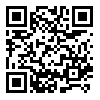Volume 3, Issue 2 (2-2009)
bjcp 2009, 3(2): 27-37 |
Back to browse issues page
Abstract: (11424 Views)
The main purpose of this study was to develop and validate a diagnostic test for dyscalculia in fifth grade in primary schools of Isfahan. For this purpose, content analysis was conducted on the content of fifth grade math textbook. Keripendorf’s coefficient of 0.88 was found based on consistency of content analysis. Based on Bloom’s (1926) Cognitive Theory, 150 questions were designed and test via a pilot study. The test with revised questions were administered to 300 students (152 males, 148 females) who were selected using multi-level cluster sampling method from five districts of Isfahan. Questions and test parameters were assessed based on the classic test and item-response theory. Results showed that the test had desirable validity and reliability (α= 0.92, test-retest coefficient= 0.94). Specificity and sensitivity of 0.99 and 0.96 were obtained for this test, respectively. Based on item-response theory, discrimination a (g) and difficulty b (g) Parameters showed that the questions had desirable discrimination power and acceptable difficulty. Furthermore, the questions had complete fitness with two-parameter model (p>.0.05). TIF curve demonstrated that the test was suitable for students with math ability (θ) between +2 and -0.2.
Type of Study: Research |
Subject:
Special
Received: 2013/12/16 | Accepted: 2013/12/16 | Published: 2013/12/16
Received: 2013/12/16 | Accepted: 2013/12/16 | Published: 2013/12/16
| Rights and permissions | |
 |
This work is licensed under a Creative Commons Attribution-NonCommercial 4.0 International License. |
